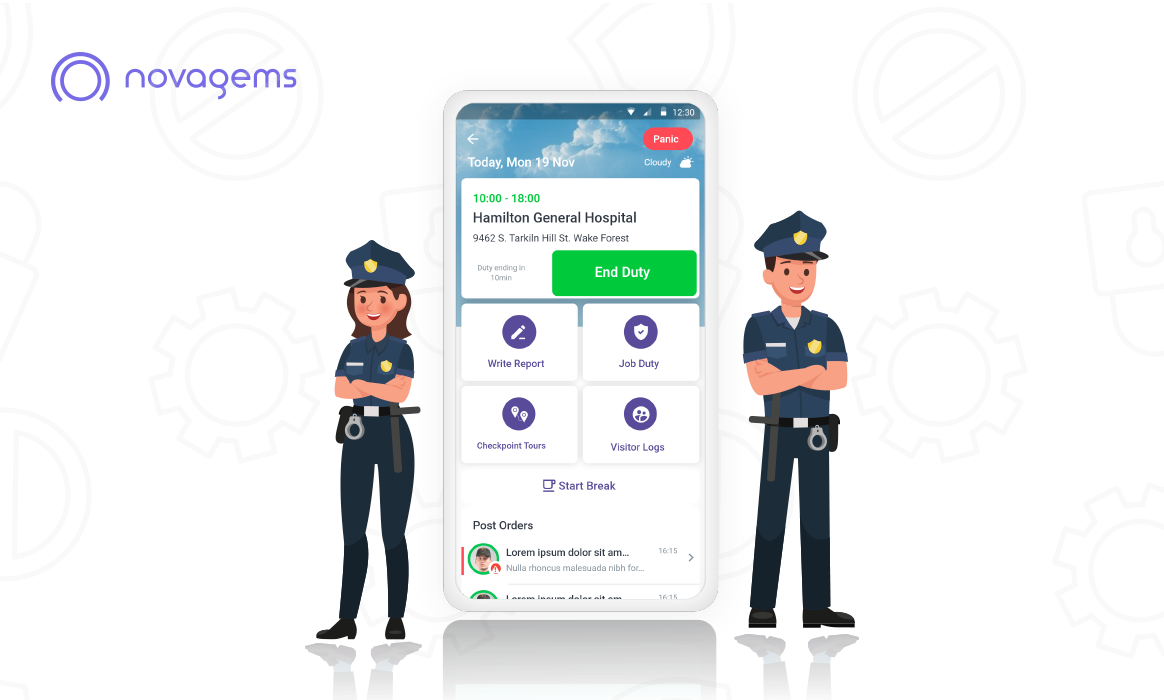Imagine your security guards equipped with smartphones or dedicated handheld devices. As they navigate their assigned patrol route, they approach strategic checkpoints strategically placed throughout your property. At each checkpoint, a simple tap or scan unlocks the magic. Sounds fun right? That is the power a Security Guard Checkpoint System holds.
Security guard checkpoint systems are essential tools in ensuring the safety and security of various premises. These systems, also known as guard monitoring systems, help monitor the movements and activities of security guards as they patrol the area. But how exactly do they work, and what benefits do they offer?
Understanding the Basics
At its core, a security guard checkpoint system consists of designated checkpoints strategically placed throughout a property. These checkpoints are equipped with electronic devices such as barcode scanners, RFID readers, or NFC tags, along with software that tracks and records the movements of security guards.
Beyond the Basics:
The security guard tracking software offers various features to amplify security effectiveness:
Panic Button: Feeling unsafe? Guards can discreetly trigger a panic alert, sending immediate notifications to supervisors and triggering pre-defined emergency protocols. Imagine lone worker safety taken to the next level with this built-in security net.
Incident Reporting: Encounter a suspicious activity? Guards can instantly report incidents with photos, videos, and detailed descriptions directly through the system. This streamlined process ensures prompt response and accurate documentation for incident analysis.
Task Management: Assign specific tasks to guards at designated checkpoints, ensuring thorough coverage and completion of critical security protocols. Imagine a system that guides guards and ensures every aspect of their patrol is carried out meticulously.
Data Insights:Analyze patrol data to identify trends, optimize routes, and improve overall security strategy. Imagine turning raw data into actionable insights that enhance your security posture and proactive responses.
Now let’s dive into how the system actually works.
Check-In Process
When security guards begin their mobile patrol, they check in at a designated checkpoint using their assigned device or tag. This action marks the start of their patrol and records the time and location of their check-in. The system will start tracking the security guard and his activities during the patrol. There are systems that will send real time notifications to the managers to help them know when the guard is actually in. The guard monitoring system provides GPS tracking and geofencing features for this very thing.
Patrol Route
Security guards follow a predetermined patrol route. Which includes multiple checkpoints located at key areas around the property. As they reach each checkpoint, they check in again, providing a timestamp and location data that verifies their presence at that location. The security guard can easily cover the whole premise without any tension. In case he sees suspicious activity, the security guard tracking software will help him raise the alarm. This will prevent bigger damages from happening and loss of property too.
Real-Time Monitoring
The data collected from each checkpoint is transmitted in real-time to a central monitoring station or a cloud-based platform accessible to security supervisors. This allows supervisors to track the movements of security guards in real-time and ensure they are following their assigned patrol routes. This tracking happens instantly, providing up-to-the-minute information on their whereabouts. This helps enhance overall security operations and ensure the safety of the premises.
Incident Reporting
In case of any security incidents or abnormalities, security guards can use the checkpoint system to report incidents directly from their devices. This triggers an immediate response from supervisors. Who can dispatch additional resources or notify relevant authorities as needed. Using the guard monitoring system, security guards can report incidents directly from their assigned electronic devices, such as smartphones or tablets. They can access a designated reporting feature within the system. Where they can input relevant information about the incident, including the nature of the incident, location, time, and any other pertinent details.
Data Analysis
The data collected by the checkpoint system is stored and analyzed to identify patterns, trends, and areas of concern. This information can be used to optimize patrol routes, enhance security protocols, and improve overall safety and security measures. The collected data is stored in a central database or a cloud-based platform accessible to security supervisors. This ensures that all data is securely stored and easily accessible for analysis. Data analysis can also be used to evaluate the performance of security guards and security operations. By analyzing metrics such as patrol completion rates, response times, and incident resolution rates, supervisors can assess the effectiveness of security procedures and identify areas for improvement.
Conclusion
In conclusion, a security guard checkpoint system is a valuable tool for maintaining the safety and security of various premises. By providing increased accountability, improved security, efficient patrol management, enhanced reporting, and data-driven decision-making capabilities, these security guard tracking software help organizations avoid security risks and protect their assets effectively.
